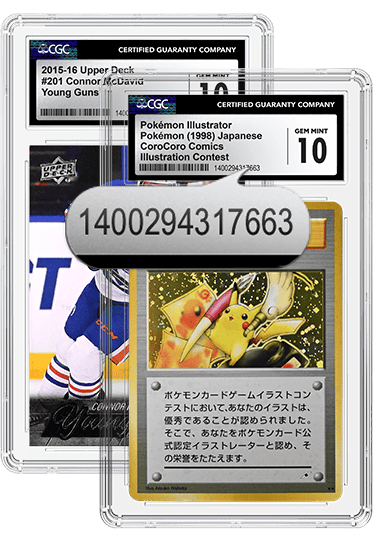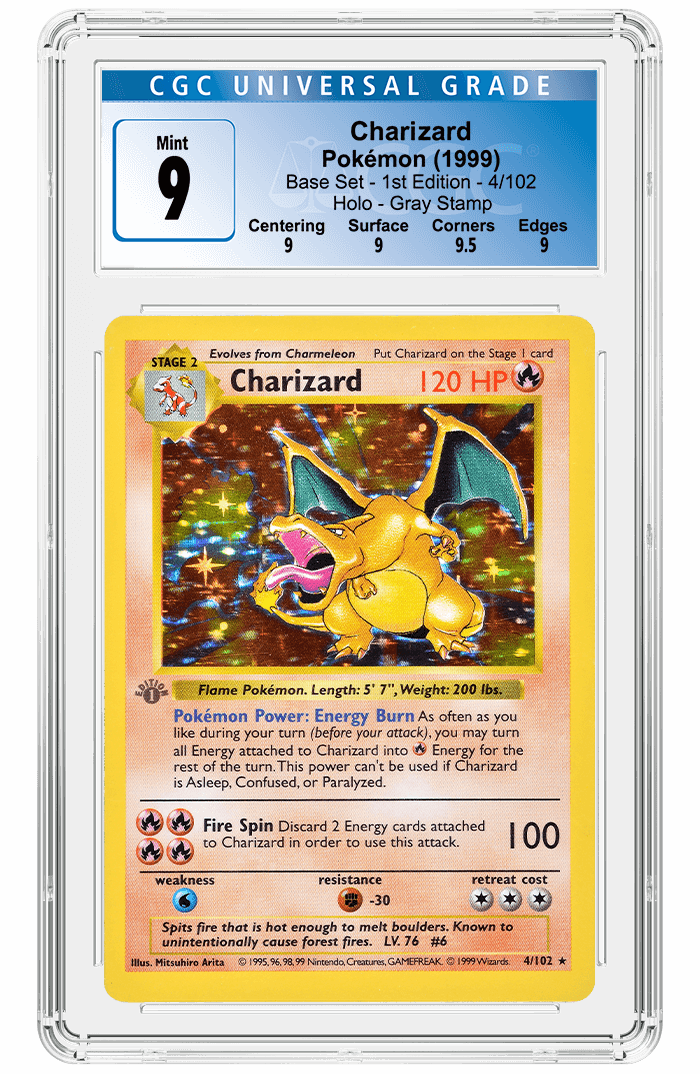Altered Card Alert: Holo Filler Card
Posted on 4/10/2024
By
Raeann Calcutta
When Pokémon TCG manufacturers create holographic cards, they do so by printing 100 or more Pokémon cards onto a sheet of cardstock to which holographic foil has been laminated. Occasionally, for reasons of collation, there will not be enough cards to fill every space on the sheet. This results in a blank holofoil card — usually called a “filler card” — such as the example below. These filler cards are quite rare, and few of them escape from the manufacturer. However, because they are typically removed manually, some examples do make it to the public where they can command a large premium when they are sold.
 |
 |
| A Yellow Border (SWSH-Style), Pokémon (ND) Filler Card Cosmos Holo graded CGC 8 Click images to enlarge. |
|
Unfortunately, these rare cards have attracted the attention of counterfeiters, who want a piece of the pie for themselves. CGC Cards™ has recently encountered altered holo filler cards in the grading room, where they were quickly identified as illegitimate.
One of the first obvious differences between the genuine filler card and the altered example is the inclusion of copyright information on the bottom border of the altered card. Authentic filler cards will not have this information printed on the card.
By comparing altered and genuine filler cards, we can see that the space between the yellow border and the holo layer is noticeably different. On the left, the yellow border and the holofoil layer seem to blur together and have a red tint. Meanwhile, the card on the right has a clearly separate yellow border that runs parallel to the holofoil and has a thin white line in between the two. Can you tell which one is the authentic example?
 |
|
| A close-up image of the borders of an altered card (left) and a genuine example (right). Click image to enlarge | |
The left card is altered. Normally, the yellow border and holofoil layer on a Pokémon card will look like the right example: clean and evenly split, without traces of overlap. One possible reason for the jagged overlap on the altered filler card could be the method that the counterfeiter used to alter the card — acetone ink removal. By using acetone (a solution commonly found in nail polish remover) and a clean cloth, the top ink layers of many holographic Pokémon cards can be removed, leaving only the plain holo card stock left. This process isn’t perfect, as it can cause the card border to bleed into the holofoil, erasing that clean break between the two.
Another telltale sign of acetone ink removal is the residual ink present on the altered card. Removing ink from a surface is never a perfect process, and residue is sometimes left over. In this case, the card still has some residual red ink present on the holofoil layer that wasn’t completely removed. It’s possible, then, that this card was once a Fire-type Pokémon card, or possibly even a holo Fire Energy.
 |
|
| Flecks and streaks of red ink are still present, indicating there were once colored layers on the holofoil card stock. Click image to enlarge | |
To further test the makeup of Pokémon cards, CGC Cards subjected the two holofoil filler cards to specialized lighting sources using some of CGC Cards’ advanced authentication technology. These additional lighting sources help to show that the holofoil card stock on the altered example reacts differently than the genuine example.
Under ultraviolet lighting, the foil on the genuine holo filler card has a visible gloss layer over the top of the foil that reacts with the UV light. On the altered example, however, this glossy layer is severely dulled. All Pokémon cards are treated with a clear coating to protect the card stock and give it a glossy finish. While this gloss layer is still present on the right, it's likely that the acetone treatment used on the altered example either severely damaged the gloss layer or removed it completely.
 |
|
| The altered example (left) is dull, while the genuine filler card (right) has a clear sheen to it. Click image to enlarge. |
|
It's important to exercise caution when purchasing ungraded cards, especially cards that are easily altered, such as holo filler cards. Every card certified by CGC Cards is guaranteed to be authentic and not overgraded under the CGC Guarantee. For more information, click here.
Stay Informed
Want news like this delivered to your inbox once a month? Subscribe to the free CGC eNewsletter today!


